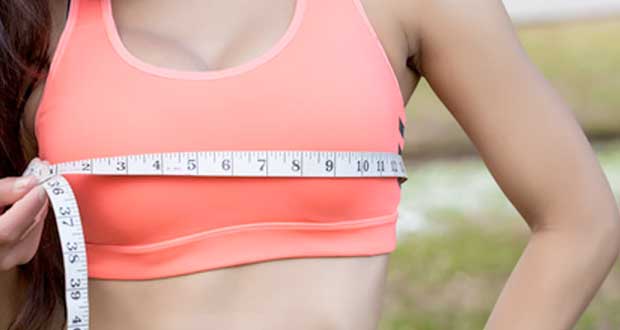
A good, comfortable sports bra is a vital piece of a women’s sports kit. Not wearing one can lead to irreversible damage to the breasts. Research from Shock Absorber and the University of Portsmouth has demonstrated that wearing a sports bra reduces breast movement (bouncing) by a massive 74%! So how should a sports bra fit and how do you find the perfect one?
Why wear a sports bra?
The breast does not contain any muscle, as falsely believed by many women. The only support it receives is from ligaments called the Coopers ligament. If unsupported during exercise, this ligament can stretch, resulting in sagging of the breast tissue.
Unbelievably 73% of women are not wearing a sports bra to exercise in! Research from Shock Absorber and the University of Portsmouth has demonstrated that wearing a normal bra during exercise reduces breast movement by 38% when compared with wearing no bra at all. Wearing supportive sports bras reduced movement by a massive 74%!
Many women with a smaller cup size also believe that they do not need any extra support. Again this is not true. Even a 34A (75A) breast moves up to 40mm away from its resting position during exercise. Larger breasts can move up to 90mm!
When buying your sports bra, there are so many out there to choose from you can be spoilt for choice! The most important thing is to get one which fits properly, not just one that’s in your favourite color! We teamed up with Shock Absorber to find out how to measure for sports bras and how to then make sure it fits properly.
For a sports bra fitting, all you need is one band measurement, taken from underneath the breasts, where the band of the bra will sit. It should be taken from the side position and should be a very firm, tight measurement (this is because the tape measure is non-elastic, but the bra’s band will be). Centimeter measurements are converted into inches to get the typical sports bra sizing (e.g. 34, 36, 38, etc). The band size is always the most important part of bra fit as the band actually provides all of the support, so make sure you get this right! You shouldn’t be relying on the straps for support.
As for the cup size, try the size that you believe you are in your daily bras, and then follow the guidelines below to check that this is, in fact, the best sports bra size for you.
To know you have the right size, follow these guidelines:
- Start with the bra on the loosest catch. This will allow you to take it in as the bra stretches through a wash and wear.
- You should only be able to get two finger widths behind the back of the band. If more, then it is too big and you should lower the band size.
- The breast should be fully encased within the bra with no overspill at the top, sides or bottom. If there is overspill, then the cup size is too small.
- You should only be able to fit two finger widths under the shoulder strap. If more then it is too big.
- The front of the band should sit close to the skin and not gape. If not, then you need to come down a band size.
- There shouldn’t be any excess material or puckering around the cup. If there is then you need to come down a cup size.
If you decide after trying on your bra that it is not right, you must alter both the band and cup size. For example:
- If you go up a band size, you should come down a cup size.
- If you go down a band size, go up a cup size.
- If you go up a cup size, come down a band size.
- If you go down a cup size, go up a band size. For example, a 34B has the same cup size as a 32C.
Is my sports bra too small?
One easy way to see if your sports bra is too small is if the breasts are spilling out at the top. Looking sideways on will show the breasts bulging forwards with the edge of the bra cutting in. The bra should sit smoothly over the breast.
Also if the band is too big there will be much too much movement in the band. From the front, the band will sit away from the body. This bra is not going to offer any form of support with regards to the sport because the breast is spilling out at the front. The band isn’t offering enough support because it is not firm enough.







